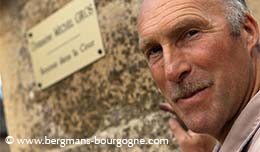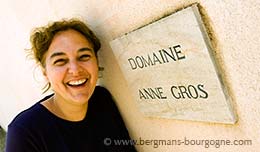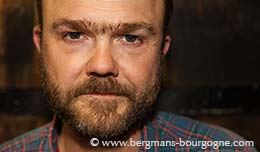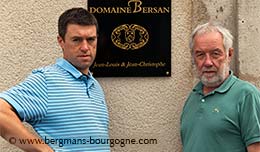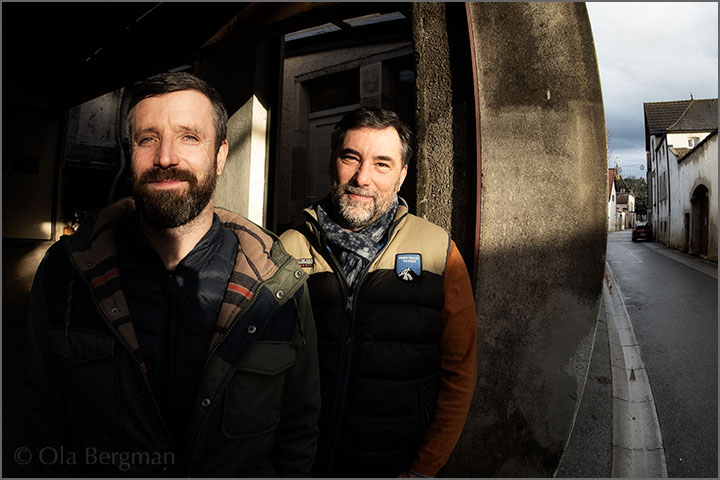
his is Savigny-lès-Beaune. Descend in to the Pavelot cellars and you will find a multitude of Savigny wines, held together by a few common denominators and separated by the terroir.
– We have the same guidelines for all our wines, says Hugues Pavelot, whether it is a Bourgogne rouge or a premier cru. We strive to take care of each vintage in the best possible way, to favour the fruit, the freshness. That is the essence of the pinot noir. And to go with that, depending on the appellation, there is certain kind of tannins we are looking for, always silky tannins. Dry tannins are not allowed.
Domaine Jean-Marc & Hugues Pavelot is right in the centre of Savigny-lès-Beaune. This is a 17-hectare domaine. Most of it is red and the majority of the vineyards are in Savigny-lès-Beaune, with a little bit of Beaune, Aloxe-Corton and Corton thrown in for good measure.
 The Pavelots have been around for a long time. They have managed to track the family back to around 1700, where there was a winegrower in nearby Pernand-Vergelesses by the name of Claude Pavelot. Today the domaine is run by Hugues Pavelot and his brother Pierre Yves. Their father Jean-Marc is still there for the daily work, despite having reached the retirement age a long time ago.
The Pavelots have been around for a long time. They have managed to track the family back to around 1700, where there was a winegrower in nearby Pernand-Vergelesses by the name of Claude Pavelot. Today the domaine is run by Hugues Pavelot and his brother Pierre Yves. Their father Jean-Marc is still there for the daily work, despite having reached the retirement age a long time ago.
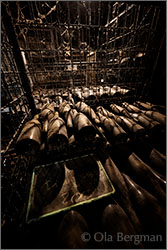 – It really started with our great-grandfather, Henri Alfred Pavelot (1872-1949), says Pierre Yves Pavelot. Like everybody else at the time they had a little bit of vineyards. The main part of the production were other crops. Our great-grandfather and great-grandmother developed the vineyard side of the domaine and started selling in bottle.
– It really started with our great-grandfather, Henri Alfred Pavelot (1872-1949), says Pierre Yves Pavelot. Like everybody else at the time they had a little bit of vineyards. The main part of the production were other crops. Our great-grandfather and great-grandmother developed the vineyard side of the domaine and started selling in bottle.
Savigny-lès-Beaune is one of the largest communes of the Côte d’Or. A total of 348 hectares are under vines. There are 22 premier crus.
– We have 17 hectares, says Hugues Pavelot. 15.5 hectares of those are in Savigny. We have one hectare and a half of white village appellation Savigny and six and a half hectares of red. The premier crus cover seven hectares. We have six different premier crus. So all in all it gives us a pretty good overview of the appellation.
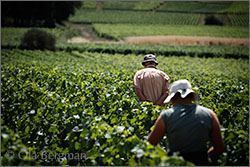 Hugues arrived at the family domaine at the turn of the millennium. His brother later.
Hugues arrived at the family domaine at the turn of the millennium. His brother later.
– It was an easy choice, says Pierre Yves Pavelot, but I didn’t study to become a winegrower. I have a BTS Gestion et Protection de la Nature. After that a bachelor's degree in organismal biology. I started working in that sector, while I was employed here, which I didn’t expect to last. But I’m still here. As co-owner though, since 2013.
– It was all about taking over from our father, who already did a good job, continues Hugues Pavelot. It was about doing an equally good job. That was the priority. It’s all about getting involved and using common sense. And it continues. Pierre arrived later and my son Louis will take over in due time. He is 25 years old. Continuity is what it is all about.
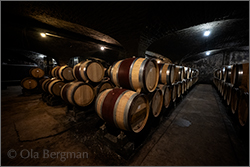 The red village appellation Savigny-lès-Beaune at Domaine Jean-Marc & Hugues Pavelot is a blend of many different plots across the appellation, basically from all corners of Savigny-lès-Beaune.
The red village appellation Savigny-lès-Beaune at Domaine Jean-Marc & Hugues Pavelot is a blend of many different plots across the appellation, basically from all corners of Savigny-lès-Beaune.
– It is a blend of a bunch of parcels around Savigny-lés-Beaune, says Pierre Yves Pavelot. Les Gollardes, Guetottes, Les Bas Liards, Les Pimentiers, Aux Champs Chardons, Aux Champs des Pruniers, Grands Picotins, Les Petits Picotins, Les Rouvrettes etc. About 15 in total. The plots produce wines quite different in character. Élevage is done according to where they are located. And then all are blended. They are vinified separately. We taste and then we blend. There are plots which are more mineral, and there are plots which are more about fruit. So when you blend you’ll have a wine which balanced.
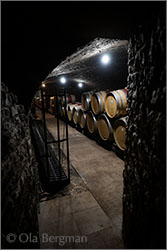 – Each vintage has basically the same blend, the same parcels, says Hugues Pavelot. There is a big difference in terms of age, but the average age is 40 years. The Savigny-lès-Beaune is characterised by freshness and fruit. Among all the parcels the is a big variation in terms of character. The final result is a nice complexity, where we are looking for freshness and fruit. A certain elegance and, at times, a touch of minerality. For the Aloxe-Corton we are looking for the same fruit, but with a bit more extraction. A bit more firm. More density. More marked tannins.
– Each vintage has basically the same blend, the same parcels, says Hugues Pavelot. There is a big difference in terms of age, but the average age is 40 years. The Savigny-lès-Beaune is characterised by freshness and fruit. Among all the parcels the is a big variation in terms of character. The final result is a nice complexity, where we are looking for freshness and fruit. A certain elegance and, at times, a touch of minerality. For the Aloxe-Corton we are looking for the same fruit, but with a bit more extraction. A bit more firm. More density. More marked tannins.
The Aloxe-Corton is the opposite of the Savigny-lès-Beaune. At least when it comes to the number of plots involved. The Aloxe-Corton comes from one single in plot Les Cras, which is by the route nationale, just south of the village.
The premier crus of Domaine Jean-Marc & Hugues Pavelot are all but one in Savigny-lès-Beaune. The Beaune Bressandes is the only premier cru outside their home turf. The six premier crus in Savigny-lès-Beaune are Aux Guettes, Aux Serpentières, Aux Gravains, Les Lavières, Les Peuillets and La Dominode.
 – We used to have very little of Serpentières, says Hugues Pavelot. Just 17 ares. Now we have more than one hectare thanks to the new parcel. The vines we have, even the ones we have taken on more recently, are not of the most productive kind. They are qualitative vines. High-yielding vines have never been planted at the domaine.
– We used to have very little of Serpentières, says Hugues Pavelot. Just 17 ares. Now we have more than one hectare thanks to the new parcel. The vines we have, even the ones we have taken on more recently, are not of the most productive kind. They are qualitative vines. High-yielding vines have never been planted at the domaine.
– The high quality clones are not easy to work with, says Pierre Yves Pavelot. They are more sensitive and they are more difficult to prune.
Aux Guettes is up behind the village on the northern side. As the name suggests (guet=watch, tour de guet=watchtower) you have a nice over the vineyards from here.
– It’s a particular terroir, says Hugues Pavelot. It’s all up on the slope. There is just 20-30 cm of soil. After that it’s the rock. On the palate Aux Guettes doesn’t have the volume of Aux Gravains or La Dominode, but it does have a nice length and persistence . Like the other wines it has nice fruit, but more tight than large. The soil is poor, so the vines lose their productivity faster here. There are young vines here, and some older. Average is probably around 30. After 60-70 there is not much left of them.
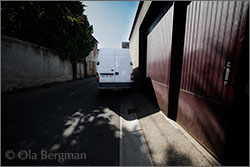 Les Lavières at Domaine Jean-Marc & Hugues Pavelot is a tiny production. They only have 0.30 hectare. Compared to Aux Guettes the soil is deeper, with more clay. Deeper down you have laves, the same type of stones you see used on roofs in Burgundy. They provide good drainage.
Les Lavières at Domaine Jean-Marc & Hugues Pavelot is a tiny production. They only have 0.30 hectare. Compared to Aux Guettes the soil is deeper, with more clay. Deeper down you have laves, the same type of stones you see used on roofs in Burgundy. They provide good drainage.
– We have 1.30 hectare of Aux Gravains, explains Hugues Pavelot. The vines are quite old. Some are 90 year old, so the yield is limited. But the quality is indisputable. The name refers to gravier, gravel, lots of small stones. The soil is quite deep soil and well-drained, allows ventilation.
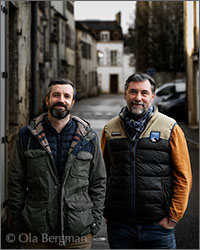 – You have the main alluvial fan, the one that formed all the vineyards in Savigny-lès-Beaune, says Hugues Pavelot. And then there is this one, Combe d’Orange, which is secondary. It is undoubtedly much more recent, but it does have effect on the vineyards. If you follow the direction of the Combe d’Orange, you come to Aux Gravains.
– You have the main alluvial fan, the one that formed all the vineyards in Savigny-lès-Beaune, says Hugues Pavelot. And then there is this one, Combe d’Orange, which is secondary. It is undoubtedly much more recent, but it does have effect on the vineyards. If you follow the direction of the Combe d’Orange, you come to Aux Gravains.
Aux Guettes, Aux Serpentières, Aux Gravains and Les Lavières are all on the same side of the appellation, facing south. Les Peuillets and La Dominode are both on the opposite side, closer to the Paris motorway, facing east/southeast and northeast respectively.
– Les Peuillets is more on the sandy side in terms of soil, says Hugues Pavelot. It is stony. Not much organic material. It is sensitive to water scarcity. There is little clay, so there are no reserves. La Dominode is more complex, but there is sand there as well. Both are soil types you don’t find on the other side.
– All the wines are made in the same way, he continues. During vinification the terroir speaks for itself. Between a Savigny village and a premier cru like Dominode there is an undeniable difference in terroir. We are just here to unveil that.
– Obviously, we know that La Dominode is firmer than a village appellation Savigny. We can do things like extend the fermentation a little bit or do a bit more of extraction. But these are just things to do in order to confirm the expression of terroir. After that, in élevage, the wines stay in barrels ten to twelve months. Ten for the village appellations and twelve for the premier crus. Here is a real difference though. We use no new oak for the village appellations, 15-30 per cent of new oak for the premier crus, where La Dominode gets the most.
© 2025 Ola Bergman










